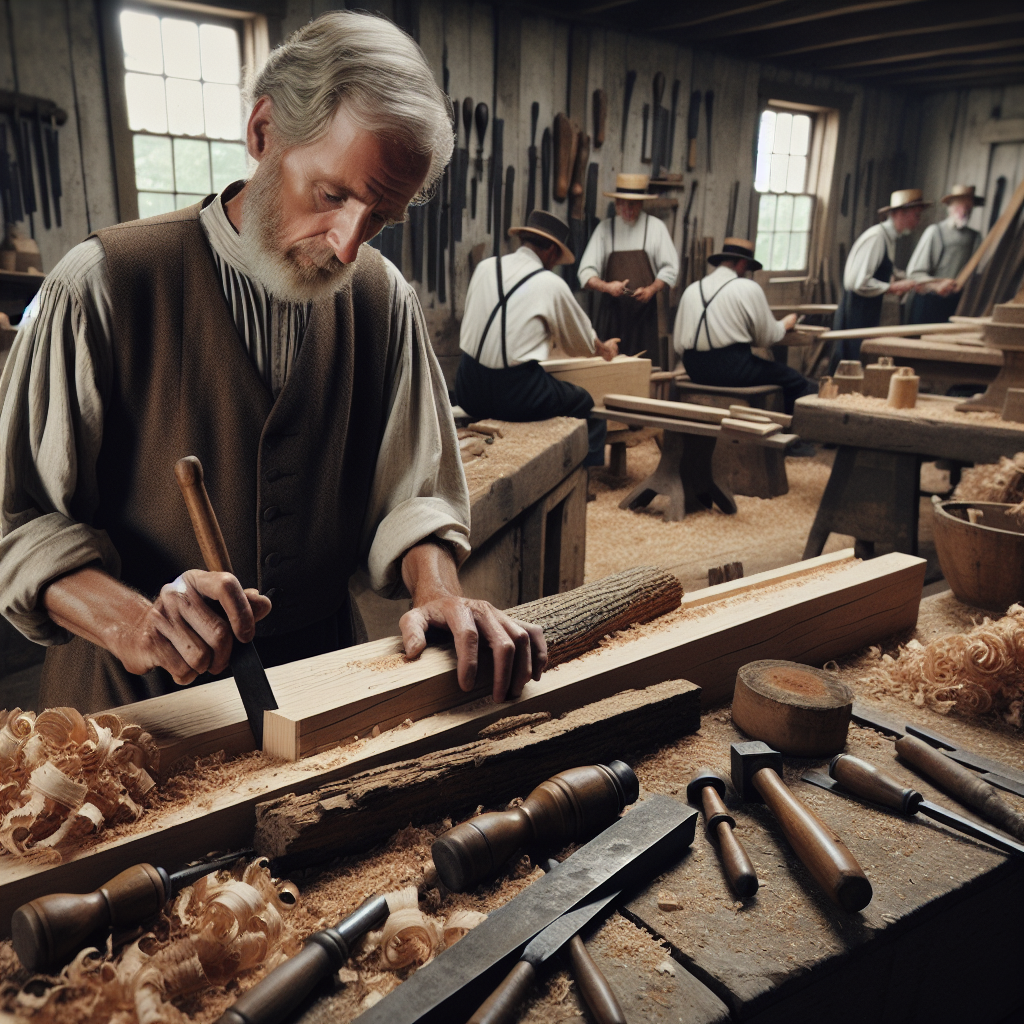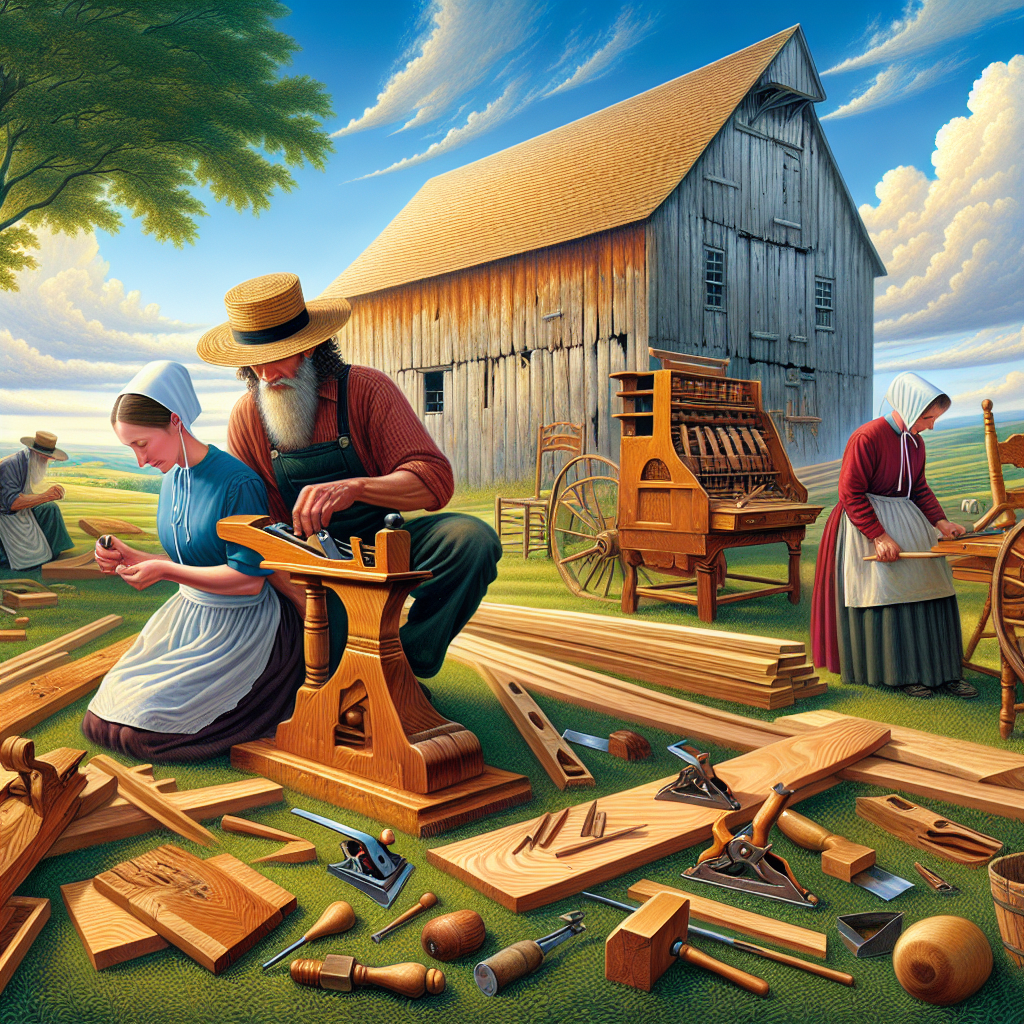

Amish Woodworking Techniques Key Takeaways
| Section | Key Points |
|---|---|
| Introduction | Amish woodworking essentials, significance |
| History and Tradition | Origin, impact of Amish woodworking culture |
| Distinctive Amish Techniques | Hand-crafted art, Amish tools and traditional methods |
| Selecting Wood and Materials | Criteria for material selection in Amish craft |
| Hand Tools Essential to Amish Craftsmanship | Importance of woodworking tools in Amish work |
| Incorporating Woodworking Technique into Modern Day Projects | Fusing Amish methods with woodworking projects |
| The Amish Furniture Building Process | Detailed furniture building steps |
| Joinery in Amish Woodworking | Different joinery techniques in Amish work |
| Learning From Amish Woodworking | Adopting Amish woodworking techniques |
| Amish Woodworking Safety Practices | Safety practices involved in woodwork safety |
| Ethical and Sustainable Practices | Connection of woodworking basics with ethics |
| Amish Woodworking in the Digital Age | Combining traditional craft with new tech |
| Conclusion | Embracing Amish methods in contemporary woodworking |
Embarking on a journey into the heart of Amish woodworking techniques unveils a world where craftsmanship intertwines with simplicity and tradition. This introduction to Amish woodworking techniques will provide a spotlight on its unique values, showing why it’s not just a skill, but a lifestyle that enriches modern woodworking.
History and Tradition of Amish Woodworking Techniques
Knocking on the wooden door of history, we are transported to the humble beginnings of Amish woodworking. The evolution of their craft, from origins to the present, tells a story of steadfast principles and cultural endurance in craftsmanship. Delving into this heritage reveals why the Amish approach not only survives but thrives amidst our fast-paced world.
The distinctive methods of Amish woodworkers stem from a deep-rooted ethos of hand-craftsmanship. Revealing the tools and time-honored methods they use offers insight into a process that resists the conveniences of modern machinery, opting instead for the somatic connection between artisan and creation.
With a discerning eye for woodworking lumber and wood, the Amish craftsmen select their materials with precision. This aspect of their technique underscores the importance they place on quality, sustainability, and the ultimate longevity of their woodcraft.
Hand Tools Essential to Amish Craftsmanship
The role of hand tools in Amish woodworking cannot be overstated. These woodworking tools are not merely instruments; they’re extensions of the craftsmen’s hands, shaping wood through skills honed over generations. The art of using these tools reflects a combination of skill, patience, and respect for the material.
Modern woodworkers looking to incorporate Amish woodworking techniques into their woodworking projects can draw on the deep well of Amish tradition. Merging the meticulous nature of Amish craftsmanship with contemporary aesthetics and functions could prove transformative in elevating the quality and meaning of their projects.
When it comes to building furniture, the Amish have codified their process into an art form. From selecting the perfect slab of wood to adding the final finish, each step holds a purpose, rooted in the pursuit of a product that feels as good as it looks.
Joinery in Amish Woodworking
The joinery used by Amish woodworkers stands as a testament to their ingenuity and understanding of wood’s nature. By examining these varied joinery techniques, we gain appreciation for the structural integrity and the timeless beauty they bring to every piece they touch.
The valuable lessons that modern craftsmen can learn from these woodworking techniques far exceed mere construction; they embody a philosophy that marries quality with integrity. Embracing the Amish work ethos could lead to not just better woodworking but better living.
With a foot planted firmly in tradition and the other in necessity, Amish woodworking also exemplifies how woodwork safety is integral to their practice. This alliance of caution and knowledge ensures that every creation is not just beautiful but crafted within the bounds of conscientious practice.
Moreover, Amish woodworking is harmonious with woodworking basics that espouse ethical and sustainable practices. Their thoughtful approach to creation is a model of ecological stewardship, blending seamlessly with a philosophy of life that values community, simplicity, and care for the future.
Even in an era captivated by digital innovation, there’s a profound reverence for Amish woodworking within the digital age. Their principles, though centuries old, still have much to teach about authenticity, dedication, and the pursuit of excellence in the woodcraft of tomorrow.
In closing, the timeless traditions of Amish woodworking continue to resonate deeply. Their commitment to excellence, communal ethos, and environmentally sound practices offer a compass by which modern woodworkers can navigate their own craft, enriching work with depth, purpose, and authenticity.
FAQs
What are the core values of Amish woodworking techniques?
- Amish woodworking is rooted in timeless principles that prioritize craftsmanship, simplicity, and a deep connection to tradition. These core values guide every aspect of the woodworking process, resulting in pieces that reflect a rich cultural heritage [/woodworking-basics/].
How do Amish woodworkers select materials for their craft?
- Amish woodworkers follow a meticulous process for selecting materials, emphasizing quality, sustainability, and a deep respect for nature. Each piece of wood is chosen with care, ensuring it meets both aesthetic and functional requirements [/woodworking-wood/].
What role do hand tools play in Amish woodworking?
- Hand tools hold a central role in Amish woodworking, embodying the tradition’s emphasis on craftsmanship and skill. Amish woodworkers rely on hand tools to shape, carve, and refine their creations, contributing to the unique and personalized nature of each piece [/woodworking-tools/].
Can contemporary woodworking projects benefit from Amish methods?
- Absolutely, Amish methods offer valuable insights for contemporary woodworking projects. The emphasis on craftsmanship, attention to detail, and sustainable practices can enhance the quality and authenticity of modern creations [/woodworking-tips-and-techniques/].
What is unique about the Amish furniture building process?
- The Amish furniture building process stands out for its commitment to handcrafted excellence. Each piece is made with precision and care, showcasing intricate details and a dedication to producing furniture that is both functional and aesthetically pleasing [/woodworking-projects/].
How do Amish woodworking practices align with woodwork safety?
- Amish woodworking practices prioritize safety through a combination of experience, training, and a deep understanding of the tools and materials used. Attention to detail and adherence to safety protocols ensure that the woodworking process is both efficient and secure [/woodworking-safety/].
Can Amish woodworking be compatible with digital-age technologies?
- While rooted in tradition, can benefit from select digital-age technologies. Integrating modern tools for design, planning, and communication can enhance efficiency without compromising the fundamental values of craftsmanship [/woodworking-supplies/].

